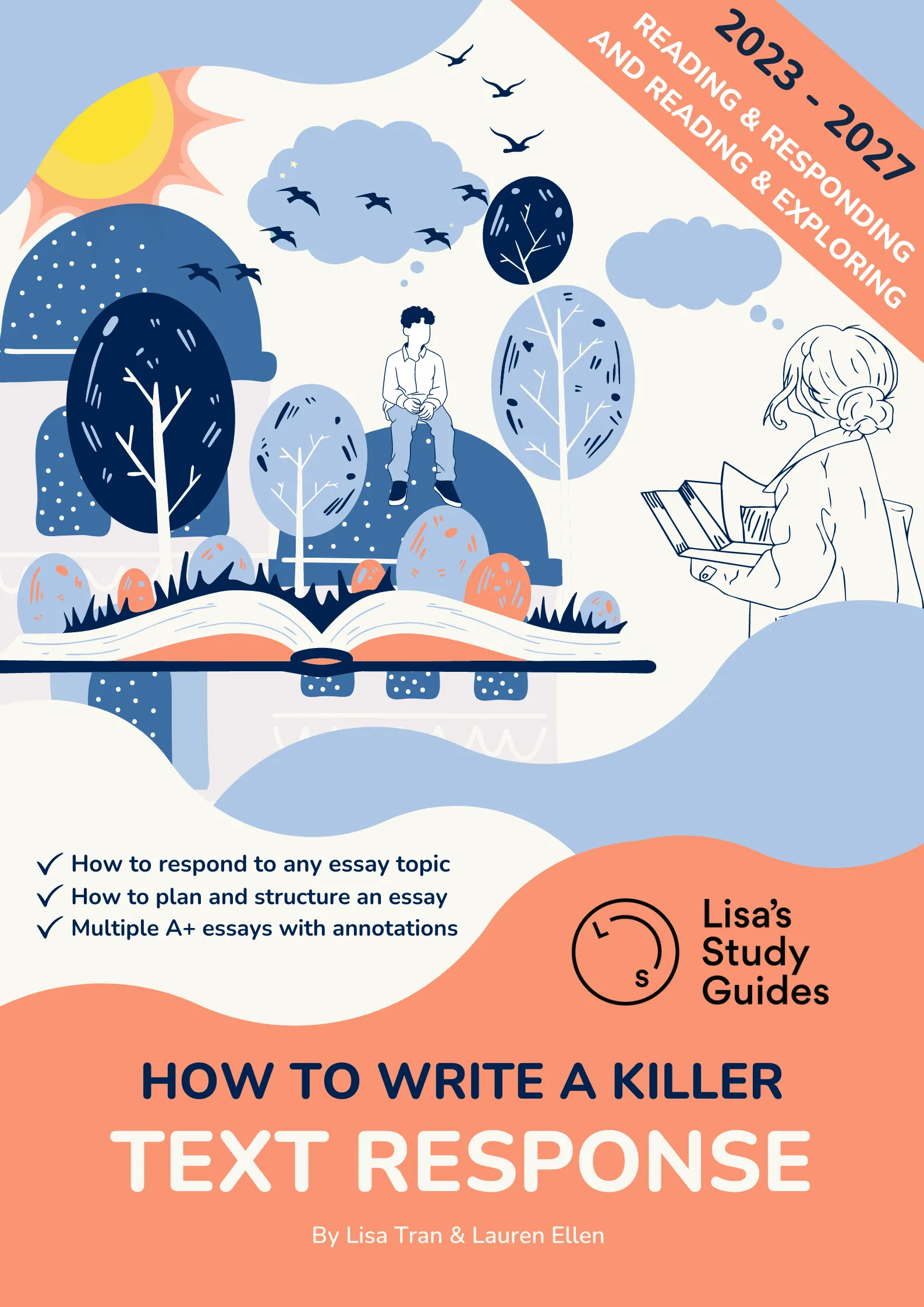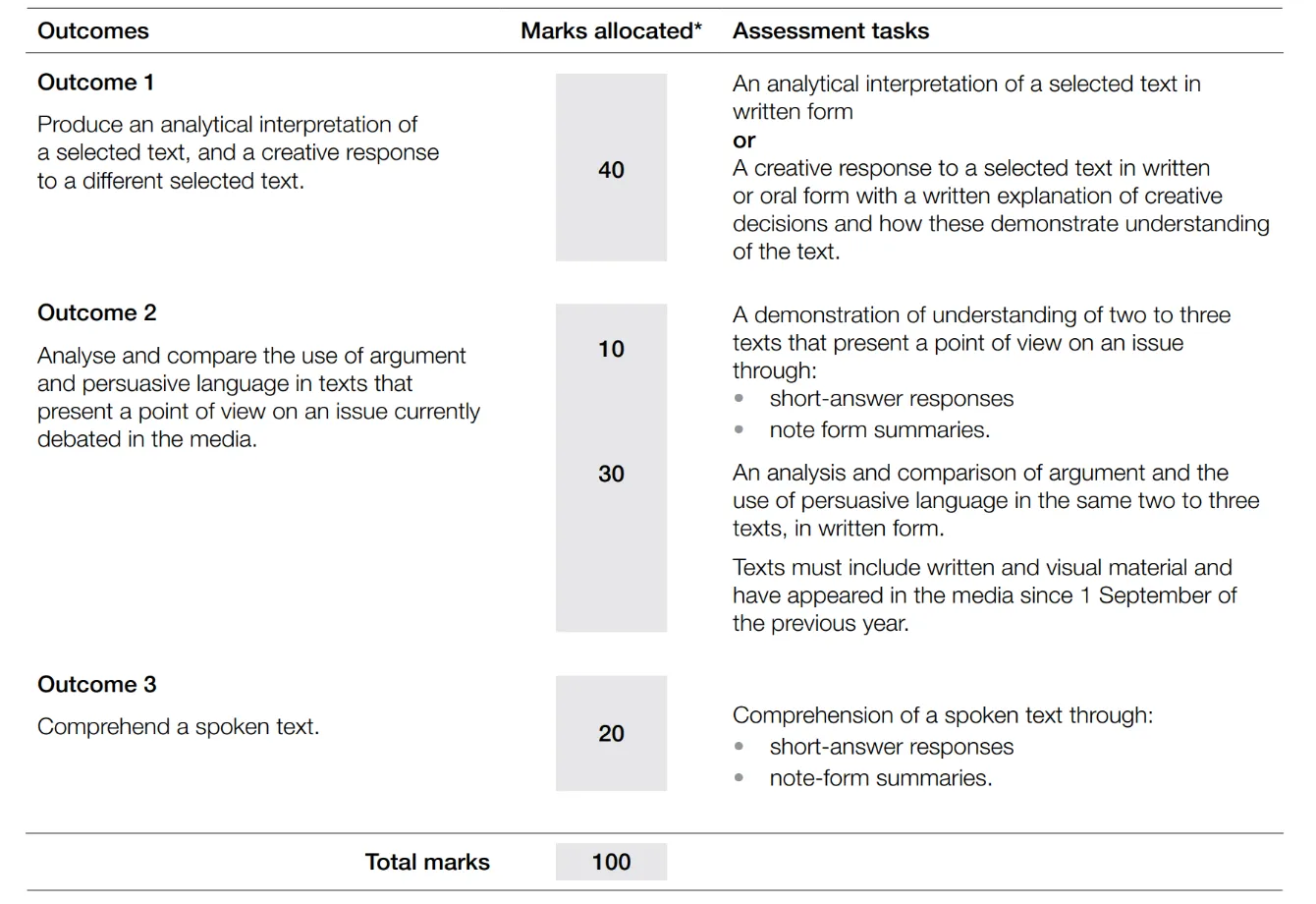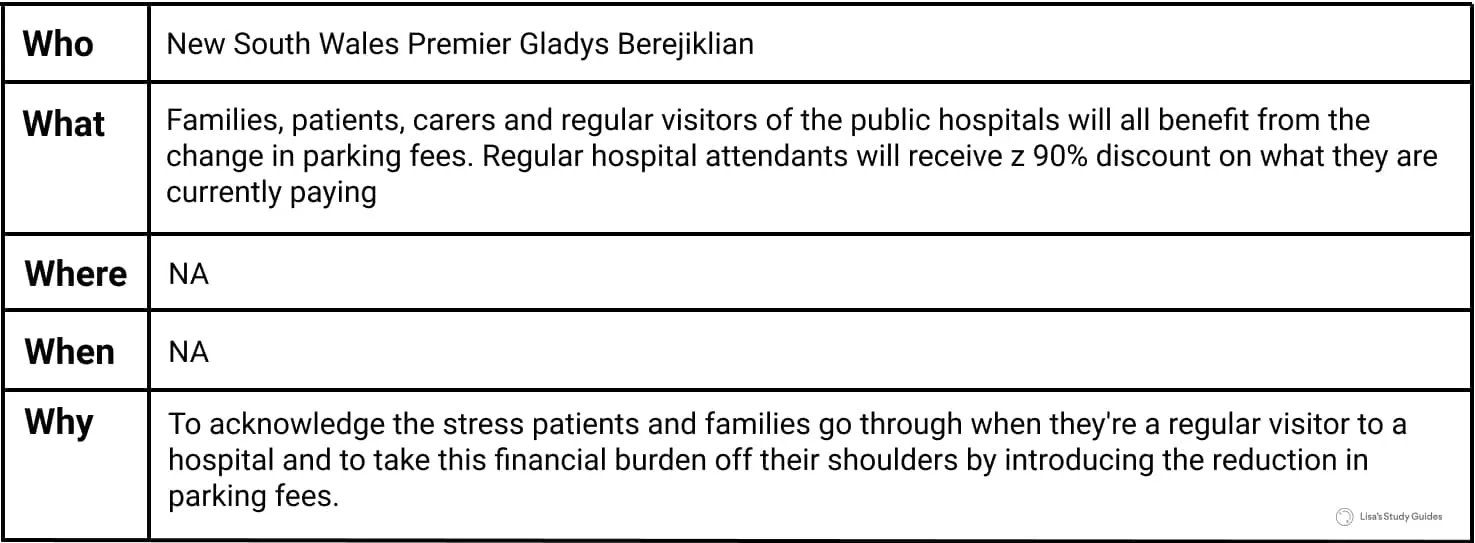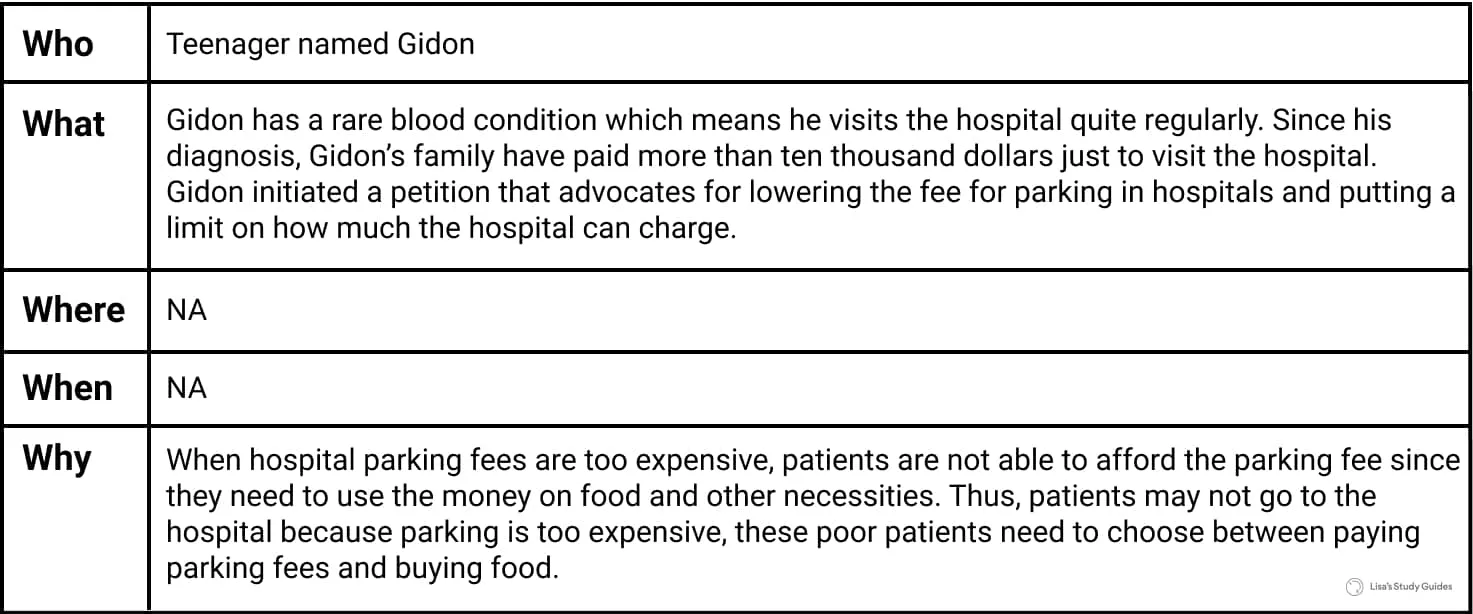Updated on 15/12/2020.
Contents
- Summary: A Brief Snapshot
- Character Analysis
- Themes
- Symbolism
- Stage Directions
- Essay Topics
- Essay Topic Breakdown
- Resources
Extinction is usually studied in the Australian curriculum under Area of Study 1 - Text Response. For a detailed guide on Text Response, check out our Ultimate Guide to VCE Text Response.
1. Summary: A Brief Snapshot
At the heart of innovative technology and products lies exceptional human creativity. Our brains are practically wired to create and innovate newness. Naturally, the influx of products entering the market creates a consumer frenzy. Suddenly, everything is a commodified entity with a dollar-sign attached to it. Its inherent value lies in how much consumers covet the item.
Let’s take the iPhone for example! An idea of a communication device - both sleek in its functionality and aesthetic - is mass produced, consumed by millions and the cycle perpetuates itself. It is an item so coveted and desired, a 17-year-old boy from China sold a kidney to buy the iPad and iPhone. This phenomenon of consumerism is symptomatic of a contemporary world’s obsession with vanity and aesthetic. Our fixation on the surface-level and glossy facades is similarly echoed by Extinction’s main protagonist, Professor Heather Dixon-Brown, who criticises the ‘charismatic fauna push’ where we are ‘making celebrities out of pandas and polar bears’. While those campaigns are successful in raising better awareness and positivity in the realm of conservation, they do not change the ways in which we live and consume.
How we live today is inflicting a deep ecological impact on planet earth. Furthermore, as urban landscapes inevitably expand, we continue to encroach on the territory of the natural world.
These are the kind of thoughts that popped into my mind after reading Extinction. Hannie Rayson’s provocative play delves deep into the central question of what it means to uphold a personal conviction in the face of self-interest and necessity. Casual flings, extinguishing of life and the friction between ‘ideological purity’ and functionality threatens to unhinge even seemingly robust characters such as Heather Dixon-Brown, an ecologist who preaches that she ‘uses her head, not her heart’. Rayson’s literary work endeavours to capture how the human character is, in fact, multidimensional and never static! As the passionate environmentalists and pragmatic ecologists are entangled in ethical quandaries, the playwright also illustrates how divorcing your mindset from emotion is a universal struggle. Furthermore, she explores how moral conviction is consistently at odds with the demands of the personal and professional domains we inhabit.
Throughout the drama encapsulating mining magnates, environmentalists and ecologists, Rayson combines their fictional voices to echo a cautionary tale of how self-interest and misconception about ‘the other’ may distort rationality. When the CEO of Powerhouse mining, Harry Jewell, bursts into a wildlife rescue centre in Cape Otway, holding a critically injured and endangered tiger quoll, he inadvertently catalyses a conflict that will draw out the prejudices withheld by the trio of environmentalists.
I encourage you to think about the lessons embedded in the play. What are the take-home messages YOU have discovered?
Guiding Questions:
- What is the message the playwright is attempting to deliver to her audiences?
- When you finished the play, what feelings were you left with?
- Which characters did you find likeable? Who aggravated you the most? And most importantly, provide evidence for why you felt that way! Was it because of their problematic ways of dealing with an ideological crisis? Or their fierce passion towards upholding moral conviction?
2. Character Analysis
Let's take a look at these deeply flawed human beings:
Professor Heather Dixon-Brown
- Director of the CAPE institute
- Interested in only saving species that are ‘statistically saveable'.
- Bureaucrat with the realism to match.
'I am an ecologist, not an environmentalist. I use my head, not my heart.'
'Species are like commodities…I just don’t approve of this ‘charismatic fauna’ push - making celebrities out of pandas and polar bears.' (p. 99)
'You want me to close the CAPE. Is that what you want? Then we can bask in ideological purity…' (p. 120)
The never-ending struggle between heart and mind is central theme in the play.
Harry Jewell
- An idealist with the knack for alluring women to fall for him.
'You don’t serve your cause by being indifferent to the interest of working people.'
'I know his type: the kind of greenie who’s always saying no. No dams. No mines. No roads.' (p. 114)
'I am not some multinational corporation devouring the Amazon. I’m just a bloke who’s come back home.' (p. 114)
Piper Ross
- Zoologist from San Diego Zoo (temporarily transferred)
- Andy Dixon’s girlfriend
- Gets entangled in a romp with Harry Jewell aka Mr. Evil
'They are all 'worth saving''. (p. 83)
Andy Dixon
- A vet who is extremely pragmatic in his mindset towards his work and personal life
- Slight aversion to technology
- The inevitability of technology supplanting certain occupations
- Technological evolution? (Is it the kind of evolution we want?)
'…the great advocate for our native flora and fauna…' (p. 118)
'You should see this dairy farm. It’s all computerised. They’ve got one bloke managing a thousand cows. No human supervision of the milking. No-one to check the udders. I’m just there, doing the rounds. Like a robot.' (p. 82)
3. Themes
Logic vs. Emotion (Pragmatism vs. Ideological Purity)
To divorce your emotions from affecting your decision-making capacity is a universal struggle aptly captured by Rayson’s depiction of Dixon-Brown’s gradual inclination towards the tiger quoll project funded by a coal company. In this case, we can argue that her objectivity and ‘her head’ is seemingly beguiled by the charms of Harry Jewell.
Early in the play, Professor Dixon-Brown is anchored to her desk, filing applications and paperwork instead of ‘getting back to her own research’. This prospect changes when Harry - big coal - offers 'two million dollars on the table' to fund the tiger quoll campaign. Nonetheless, we see the two unexpected collaborators setting a dangerous precedent where one can simply equate a species’ livelihood to ‘commodities’ and ‘a good return’ of profit.
What is compelling about Harry’s character is that he combines both pragmatism and ideological purity. Firstly, Harry has the means and business acuity to manoeuvre a board of directors bent on exploring coal ‘right on the edge of the national park’. However, ‘Mr Evil’ is also inspired by nostalgia and sentimentality over a childhood memory where a tiger quoll steals his drumstick.
Conversely, Andy Dixon-Brown’s stance against the mining industry and automated dairy farms is admirable considering how technology has become a central cornerstone of modern-day life. His partner Piper Ross, a zoologist, echoes similar distaste for mining companies, however, her passion for ‘saving’ all animals eclipses her own presumptions towards ‘Mr Evil’. She is eventually persuaded to head the tiger quoll project.
Whereas, Professor Dixon-Brown enjoys the uncomplicatedness of numbers and statistics. However, her carefully crafted algorithm fails to differentiate between the diversity of animals within the ecosphere. Instead, it filters out populations of 5000 and above to collate only the ‘statistically saveable’.
In this respect, Harry’s actions showcase how a striking a balance between pragmatism and emotion is important.
Unity in a Socially Divisive World
In this play, the ‘us vs. them’ mentality pervades the minds of the protagonists. Through the heated dialogue between environmentalists, ecologists and mining moguls, Hannie Rayson delivers the message that as a society we should not be so reliant on simplifying individuals based on age-old presumptions and surface-level characteristics. Harry Jewell echoes a similar sentiment as he discusses his company’s plans to Piper: 'Who’s this ‘we’? You don’t serve your cause by being indifferent to the interests of the working people.' (p. 92)
Zooming in: Andy & Harry: Let's explore the volatile dynamic between the two males
Andy’s indignant stance against collaborating with the mining industry showcases his resilience in sticking to his moral code. One can argue that his immediate demonisation of Harry Jewell, as evidenced by the nickname ‘Mr. Evil’, is a symptom of Andy’s oversimplified thinking. It is through Andy’s inflammatory and infantile language towards the Mining CEO that Rayson articulates how the politics of conservation is in shades of grey. Conversely, Harry’s admits that he knew Andy was ‘the type of greenie who’s always saying no [from the moment he came through that door]’. In highlighting the binary oppositions of the two men working in different fields, the play acknowledges how prejudice inhibits potential collaborations.
Harry and Andy showcase how our own misconceptions about ‘the other’ detract from our own moral causes - such as in this case, saving the forest. Both men are committed to the same cause. However, Andy’s antagonistic approach towards Harry undercuts his own integrity as he willingly allows prejudice to cloud his thinking simply because it is the more convenient thing to do, as opposed to collaborating and accommodating each other’s interests.
Categorising strangers into convenient stereotypes is pure laziness.
- Andy: 'Hope he didn’t damage that cruise missile he’s got out there?' (p. 73)
- Harry: 'I know the type - knew him the moment he came through that door. He’s the kind of greenie who’s always saying no. No dams. No mines. No roads.' (p. 114)
Romanticism vs. Reality
Against the backdrop of familial arguments and budding romances, Extinction’s Professor Dixon-Brown’s blunt dialogue about conservation reveals its politicised nature. Her heated dialogue with Piper echoes her frustration at ‘writing [Stuart Decker’s] applications so he can get ‘a sun tan’ conducting research on The Great Barrier Reef and win accolades for it'. Furthermore, she satirically exclaims that ‘[the institute] needs to defend its territory’. Her mocking of the vice-chancellor who acted like they were in a ‘White House Situation Room’ implicitly demonstrates her growing disdain towards the tenuous politics of her workplace. Essentially, Heather’s realist approach exposes what lies beneath the glossy exterior of conservation efforts.
I’ve seen quite a few videos of baby pandas circulating on my Facebook feed, most of them are part of a conservation effort or campaign. The comment section of these videos is like a medley of heart-eyes and exclamations of ‘How cute!!’ This relatively harmless sentiment is dismissed by Professor Dixon-Brown when she states that she is completely disengaged with ‘charismatic fauna’ (p. 99) push - making celebrities out of pandas and polar bears’. Our overwhelmingly positive reactions towards such campaigns is based on a societal gravitation towards the aesthetically pleasing which bleeds into the next thematic idea revolving around our fixation on appearance (surface-level).
Essentially, in the context of this play, the preferential treatment of endangered animals reflects our own biased thinking.
Vanity and Our Obsession With Appearance
The idea of vanity also pervades the sub-consciousness of both male and female protagonists. Against the backdrop of environmental conservation dilemmas, Hannie Rayson manages to entwine a secondary story strand which captures the insecurities peppering the female experience in this contemporary age. The audience learns that Heather Dixon-Brown spends $267 on hair removal every five weeks. Interestingly, her brother, ‘a screaming heterosexual’ (p. 95), likens the hair removal process to ‘getting a tree lopped’. The destructive and almost violent imagery of chopping down a tree echoes the crippling pressure for Heather to ‘sculpt’ herself into a particular ideal of femininity.
It is in this way that Rayson articulates a broader thematic idea that womanhood is still being defined in terms of attractiveness and perseveration of youth. Heather’s internalised insecurities resurface in her heated confrontation with Harry. She accuses him of ‘prefer[ing] a younger woman’ and having ‘never been with a woman with pubic hair’. Both of which Harry indignantly refutes. Through this heated dialogue, audiences gain an insight into Heather’s vulnerability as a divorcee-to-be and interestingly, we are exposed to her assertiveness as she questions 'can’t [you] stomach a woman who stands up to you?'
Her conflicting ideologies on womanhood are best exemplified through Harry who almost admonishes her for embodying ‘some nineteen-fifties idea of relationships’ where ‘sex with someone’ does not necessarily entail ‘a lifelong commitment’. This is also the central conflict faced by all the characters who engage in seemingly non-committal relationships and false expectation. It is through these failed trysts that Rayson disapproves of uninhibited sexual impulses and by extension, criticises the increasing promiscuity in contemporary times. Essentially, Rayson’s fixation on causal sexual relationships mirrors her own opinion that there has been a paradigm shift in how we govern our sexuality and bodies since the 1950s.
Conservation in a World of Destruction
You can define conservation in terms of ‘preservation of… ’, ‘sustaining…’.
In the personal domain, Piper maintains that she and Harry ‘slept in separate tents’ to her boss Professor Dixon-Brown who also doubles as her potential sister-in-law. Conversely, Professor Dixon-Brown is forced to make an ethical compromise to prevent a career besmirching orchestrated by a mass-email insinuating a sordid romance between her and her newest collaborator, Harry Jewell. Her reputation as CAPE’s director is nearly tarnished by the vengeful force of a fling’s ex-wife.
Do I preserve my moral compass or my professional reputation?
Other thematic ideas that relate to this umbrella phrase include: misuse of authority and ethics of the digital world.
Deleting emails is tantamount to rewording/reworking history. Professor Dixon-Brown’s attempt at salvaging/restoring her pristine moral code of ‘using her head, not her heart’ is encapsulated in her desperate dash to the IT servers at 1am in the morning to delete the incriminating email detailing her illicit relationship with Harry Jewell. This, undoubtedly, compromises both of their careers as professionals. Furthermore, their intimate fling casts Dixon-brown as a seducer/a woman who is easily compromised, which is untrue. However, it is the facades that count in the play.
4. Symbolism
Euthanising the Female Tiger Quoll
In this case, by virtue of being female, we can assume the tiger quoll ‘with a crushed spine’ has reproductive capabilities. The injured tiger quoll was a life-giving entity. Technically, if she recovered fully, the tiger quoll could be the solution to its endangered status.
Andy’s swift decision to euthanise the animal in great pain could be in reference to his own desire to ‘make [his life] over’. He has inadvertently projected his own fears and anxieties over his GSS diagnosis onto the critically injured creature. Essentially, in the moment of mutual pain, Andy could resonate with the tiger quoll.
One-Night Stands/Casual Sex/Non-Committed Relationships
My theory is that the images of casual sex serve as an ironic layer to a play titled Extinction. Both Piper and Heather unwittingly develop sexual relations with Jewell on a casual basis which symbolises how intercourse is no longer purely valued as a means for continuing the species. These ‘efforts’ for reproduction are fruitless.
1. They show how mankind is centred on pleasure and instant gratification, prioritising the self above all matters.
2. They demonstrate how modern living expectations, consumerism and the perpetuation of gluttony have led to a plateau in human evolution.
Real-life Amanda -> Tutor comment translation:
As I was reading the text, a recurring question kept nagging at me: Why are there intimate scenes sandwiched between the layers of ideological conflict and tension?
Tutor -> real-life Amanda translation:
Oh my goodness, are these characters THAT sexually frustrated? Someone’s heart is going to get broken and then we will have to analyse that in our essays. Ughhhhhh.
5. Stage Directions
Weather Transitions
1. The opening scene showcases how vets and environmentalists alike are surprised by the first sighting of a tiger quoll in a decade. Their surprise at this unprecedented occurrence is reinforced by the ‘wet and windy’ conditions. Typically, stormy weather is symbolic of chaos and unpredictability.
2. During a particularly heated exchange between Andy and Piper, the interjection of ‘thunder’ intensifies rising temperament in both characters. (p. 73)
3. When Andy discovers who ‘Harry bloody Jewell’ is, his growing disbelief and rising temperament are complemented by the off-stage sound of ‘the roar of the motorbike’. The audiological stage cue characterises Jewell as an unwanted presence of chaos and noise. As the motorbike’s roar is a sound incongruent with the natural environment encapsulating Harry.
The Meaning of Fire
In Act Two: Scene One, the secretiveness of Harry and Piper’s tryst is underlined by the ‘vast blackness’ and their figures ‘in silhouette’. Furthermore, its fragile and tenuous connection is symbolically related to how both counterparts repeatedly ‘poke[] the fire’ to ensure its longevity through the night. Perhaps, this imagery is referring to how all temptation and sexual energy need to be moderated, which complements Piper’s reluctance to continue their budding relationship.
6. Sample Essay Topics
We've offered a few different types of essay topics below. For more sample essay topics, head over to our Extinction Study Guide to practice writing essays using the analysis you've learnt in this blog!
Theme-Based
The play, Extinction demonstrates that compromise is necessary in the face of conflict.
Character-Based
As a self-professed ecologist, Heather Dixon-Brown’s decision to collaborate with 'the other’ stems from self-interest. Discuss.
Quote-Based
'I use my head, not my heart.' Extinction explores how human nature reacts under pressure and vice.
How-Based
How does Hannie Rayson explore the idea of emotion in the play Extinction?
7. Essay Topic Breakdown
Whenever you get a new essay topic, you can use LSG’s THINK and EXECUTE strategy, a technique to help you write better VCE essays. This essay topic breakdown will focus on the THINK part of the strategy. If you’re unfamiliar with this strategy, then check it out in How To Write A Killer Text Response.
Within the THINK strategy, we have 3 steps, or ABC. These ABC components are:
Step 1: Analyse
Step 2: Brainstorm
Step 3: Create a Plan
Theme-Based Prompt: Extinction is a play about personal integrity and environmental responsibility. Do you agree?
Step 1: Analyse
This essay prompt is an example of a theme-based prompt. It specifies both 'personal integrity' and 'environmental responsibility' as themes for you to consider. When faced with a theme prompt, I find it most helpful to brainstorm characters and author’s views that are relevant to the given themes, as well as considering more relevant themes that may not have been mentioned in the prompt itself.
Step 2: Brainstorm
- Personal integrity and environmental responsibility are central themes, but they aren’t the only themes that Extinction concerns itself with
- Environmental responsibility - political, financial, social, pretty much all characters (Piper and Harry as a focus)
- Personal integrity - truth versus lie, how we react under pressure, Dixon-Brown and her choice to delete the emails
- What is left over? Other kinds of responsibility, e.g. interpersonal relationships
- Interpersonal relationships, e.g. Piper and Andy (with a focus on Andy)
Step 3: Create a Plan
P1: Environmental responsibility
- Piper and Harry - the tiger quoll project
- Potential to talk about idealism versus pragmatism?
P2: Personal integrity
- Honesty, morality, ethics
- Dixon-Brown’s choice to delete the emails is motivated by selfishness, not by personal integrity
P3: Responsibility to act honestly and transparently in relationships Andy!
- He is both environmentally responsible and has personal integrity, but still struggles with his relationships until the very end of the play
If you find this helpful, then you might want to check out A Killer Text Guide: Extinction where we cover five A+ sample essays (written by a 50 study scorer!), with EVERY essay annotated and broken down on HOW and WHY these essays achieved A+ so that you know how to reach your English goals! Let's get started.
8. Resources
The Ultimate Guide to VCE Text Response
Extinction by Hannie Rayson A+ Essay Topic
How To Write A Killer Text Response (Study Guide)
How To Embed Quotes in Your Essay Like a Boss
How To Turn Text Response Essays From Average to A+
5 Tips for a Mic-Drop Worthy Essay Conclusion













.jpg)